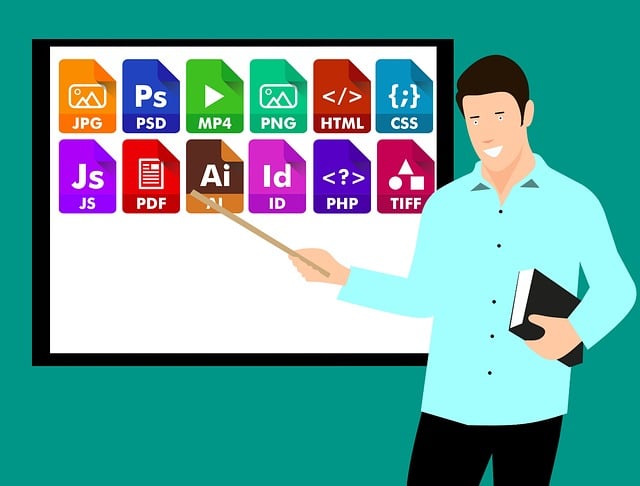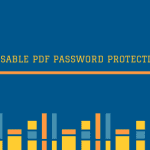
The Future of PDF Editing: Emerging Technologies to Watch
The Portable Document Format (PDF) has been an essential part of document handling in various industries for over two decades. Its ability to maintain document integrity across different platforms and devices makes it a universally accepted file format. The importance of PDFs is immense, and their editing has also been a crucial aspect of document management.
This article delves into the future of PDF editing, highlighting some emerging technologies that are set to redefine how we interact with these files, You should also read about how to convert pdf to qr code.
Table of Content
- 1 The Dawn of Artificial Intelligence in PDF Editing
- 2 Blockchain for Document Security
- 3 The Integration of Augmented Reality (AR) and Virtual Reality (VR)
- 4 The Promise of Quantum Computing
- 5 Natural Language Processing (NLP) for Easier Interactions
- 6 Collaborative PDF Editing in Cloud Computing
- 7 Integration of Biometric Authentication
- 8 Harnessing the Power of 5G for PDF Editing
- 9 The Advent of Edge Computing in PDF Editing
- 10 The Rise of Machine Learning Algorithms
- 11 Conclusion
The Dawn of Artificial Intelligence in PDF Editing
Artificial Intelligence (AI) has shown immense potential in multiple areas of technology, and PDF editing is not an exception. AI technology can help to recognize, extract, and modify text and images in a PDF file, making the task much simpler than before. Users can manipulate PDF files using simple commands, as AI understands the semantics behind our requests. The future will see a significant rise in the use of AI to edit PDF files, replacing the traditional, time-consuming methods.
Blockchain for Document Security
As PDF editing becomes more advanced, so does the need for secure document handling. Blockchain, the technology behind cryptocurrencies, is likely to become a key player in PDF editing. Blockchain can offer immutable, transparent, and secure storage for documents, including PDFs. Changes made to a document can be tracked in real time, making it an ideal solution for auditing and compliance purposes. While blockchain is known for its security features, its potential in PDF editing is just starting to be realized.
The Integration of Augmented Reality (AR) and Virtual Reality (VR)
AR and VR are no longer just for gaming and entertainment. The future of PDF editing could see these technologies incorporated, bringing about a more immersive and interactive experience. For instance, VR could create a virtual workspace, where users can edit PDF files in 3D, while AR could overlay digital text onto physical documents for a seamless editing experience. While this might sound like science fiction, it’s closer to reality than you might think.
The Promise of Quantum Computing
Quantum computing holds the promise of solving complex problems at unprecedented speeds. This computing power could be harnessed for PDF editing, speeding up processes like document conversion and large file handling. Moreover, it could enable real-time collaboration on PDF documents, without any delay or lag. This would be a game-changer for industries that rely heavily on large PDF documents.
Natural Language Processing (NLP) for Easier Interactions
Natural Language Processing, a subset of AI, is another exciting technology that could significantly influence PDF editing. NLP can make it easier to interact with and edit PDF files by using natural human language. Instead of manually searching and replacing words or phrases, users can give verbal commands to carry out tasks. This could save time and effort, making the whole process of editing PDFs much more user-friendly.
Collaborative PDF Editing in Cloud Computing
As more organizations move their operations to the cloud, it is only natural that PDF editing will follow suit. Cloud-based PDF editing platforms will allow multiple users to simultaneously edit a document in real-time, fostering more effective collaboration. Apart from improved accessibility and real-time updates, this could also significantly reduce the storage and system requirements on individual devices. Cloud technology’s scalability and flexibility promise to cater to organizations’ needs, irrespective of their size or the complexity of their documents.
Integration of Biometric Authentication
With an increased focus on data security, biometric authentication is another emerging technology likely to impact PDF editing. As PDFs often contain sensitive data, integrating biometric authentication like fingerprint scanning or facial recognition could add an extra layer of security. Users would be required to authenticate their identity before being able to edit or even view a PDF file. This technology could also be used to track document edits, ensuring only authorized changes are made.
Harnessing the Power of 5G for PDF Editing
5G, the next generation of mobile networks, is expected to have a significant impact on many areas, including PDF editing. The high-speed, low-latency connections that 5G networks offer could lead to more efficient file sharing and real-time collaboration. With the massive data transmission rates promised by 5G, even large PDFs with heavy graphics could be edited and shared almost instantaneously. This would revolutionize how professionals such as designers, architects, and engineers work with PDFs, enabling faster and more efficient collaboration.
The pace of technological advancement suggests that the future of PDF editing is on the cusp of revolution. By incorporating these technologies, the way we view, edit, and share PDF files will become more streamlined, interactive, and secure, ultimately improving productivity across various professional landscapes. It’s safe to say that the future of PDF editing is bright, filled with possibilities and innovations just waiting to unfold.
The Advent of Edge Computing in PDF Editing
As we move towards a more connected future, edge computing is set to play a pivotal role in how we edit PDF. This technology aims to bring computation and data storage closer to the location where it’s needed, to improve response times and save bandwidth. In the context of PDF editing, this could mean faster rendering and editing of large files, with less dependence on a central server or cloud services. With the benefits of decreased latency and improved processing speed, edge computing could make real-time PDF editing a seamless experience, even on less powerful devices.
The Rise of Machine Learning Algorithms
Machine learning, an application of AI, is another technology that could transform how we edit PDFs. With the ability to learn and improve from experience, machine learning algorithms could be used to automate repetitive editing tasks, such as formatting or data extraction. The algorithms could be trained to understand the context and semantics of a document, providing more accurate and relevant editing suggestions. This could significantly enhance productivity and accuracy, taking the user experience of PDF editing to new heights.
Conclusion
As technology continues to evolve, so will the ways in which we edit PDFs. From AI and blockchain to AR/VR, quantum computing, and NLP, many exciting technologies are on the horizon. These technologies not only promise to make PDF editing more straightforward and efficient but also aim to enhance security and user experience. As these technologies become mainstream, we’ll see a significant transformation in the world of PDF editing. It’s an exciting future, indeed!


